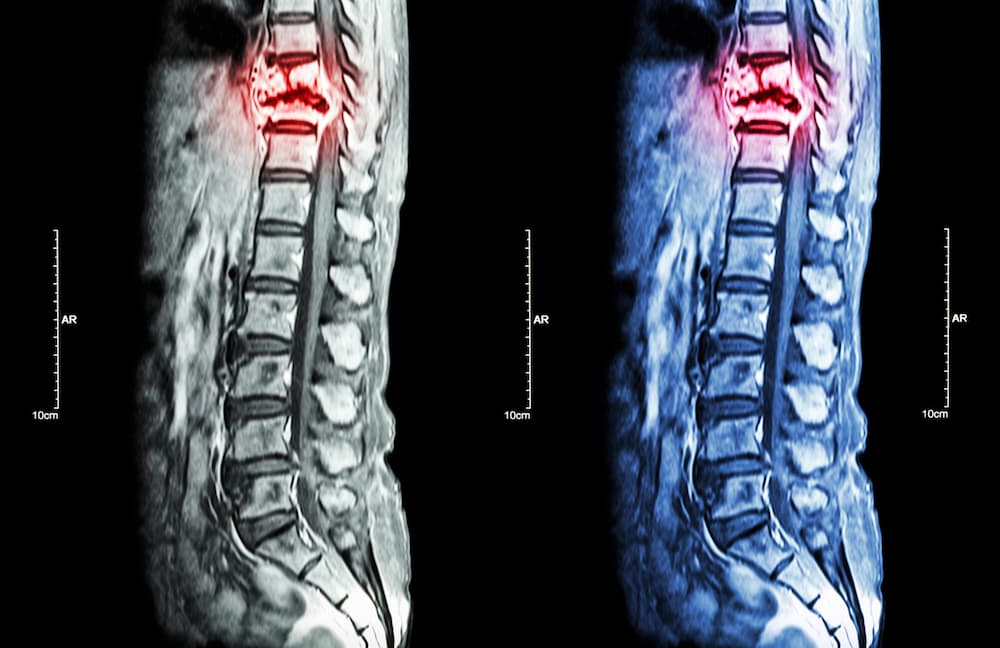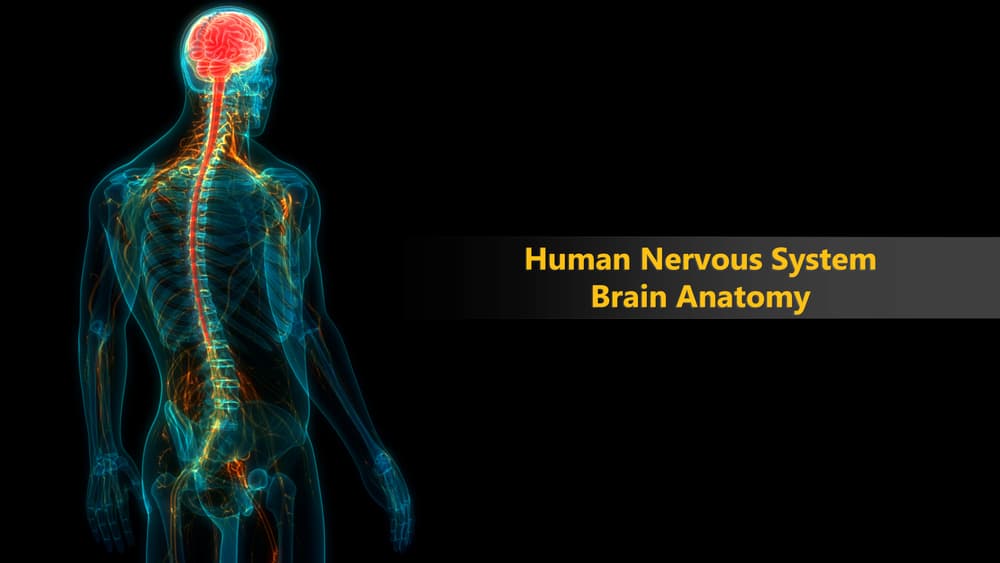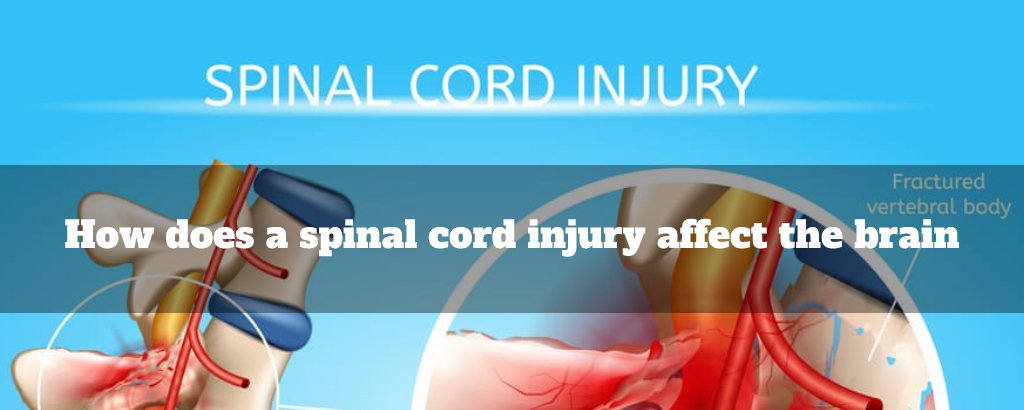There are a variety of ways in which spinal cord injuries affect the brain, depending on the nature and severity of the spinal cord injury.
They can cause severe and chronic complications such as brain inflammation, leading to nerve damage, cognitive and affective changes, and depression.
Anatomy of Spinal Cord Injury
Like an upside-down tree, the brain and spinal cord comprise the central nervous system (CNS). All of your body’s nerve fibers gather in the medulla oblongata skull base and taper to a cone in the lower back, the conus medullaris.
The spinal cord transmits brain signals to the body. The eyes, ears, and other head components are directly connected to the brain via various nerves. The same goes for the different parts of the body.
This nerve fibers network carries brain-to-body messages.
The brain’s instructions cannot be sent when the spinal cord is injured. Signals are received by the spinal nerves below the level of damage, but they cannot ascend the spinal tracts to the brain.
Normal brain functions occur, but they are not under conscious control.
As a rule, the injury will affect the nerves below the injury site. The lower the spinal injury, the less body control you will lose.
For example, a patient with a high cervical spinal cord injury will suffer from tetraplegia, which is weakness in all four limbs. This form of spinal cord injury is the worst-case scenario.
While as we go down to lower levels of spinal cord injuries, the damage lessens.
Also, the injury can be complete or incomplete.
A complete injury is defined as having no function below the level of the injury: no feeling and no voluntary movement.
An incomplete injury indicates that some functions, such as sensation and movement, exist below the injury site.
Dr. Mike explains what happens to the spinal cord following an injury in this video. He also discusses how researchers attempt to counteract various brain and spinal cord events throughout this process.
Spinal Cord Injury Affects on Brain
When a spinal cord injury affects the brain, the symptoms may not immediately appear. In some situations, brain injuries are extremely serious and can go undetected for days.
Scientists have studied the impact of spinal cord injuries but have mostly ignored the effects on brain function.

But new research has found that spinal cord injuries can cause many different neurological problems, some of which are mentioned here.
- Co-occurring Traumatic Brain Injury
There was an increased risk of traumatic brain injury for those with spinal cord injuries who had sustained injuries in car accidents or from falls due to a traumatic blow on the head.
It was reported in research that traumatic brain injury also occurred in 60% of people who suffered traumatic spinal cord injuries.
In a 2014 study of individuals with severe brain and spinal cord injuries, 58% of brain injuries went undiagnosed.
The spinal cord can sustain an additional injury over the course of days or weeks if there is bleeding, swelling, inflammation, or fluid accumulation around it.
Or, severe brain injury can occur as a sequel effect of a spinal cord injury if the victim has a period of impaired breathing or respiratory arrest after the injury (for example, if there is any delay in medical attention).
- Inflammatory changes
The inflammatory changes induced by a spinal cord injury may impact the entire central nervous system, including the brain.
Studies in models of spinal cord injuries and post-injury brain inflammation have shown a correlation between the damage and noticeable shifts in both mood and the brain’s ability to solve problems.
The trials show that processing and behavioral changes occur after a specific injury below the spinal cord that should directly affect the brain.
This is connected to an inflammatory process that can cause nerve cell loss or degeneration.
- Respiratory inadequacy:
The diaphragm and other respiratory muscles are often paralyzed in people with high cervical (C5) spinal cord damage. This causes shallow breathing (hypoventilation) and reduced oxygen intake.
As a result of this, impaired coughing and pulmonary secretions cannot be expelled, raising the risk of pneumonia.
Furthermore, SCI survivors are more likely to acquire respiratory infections, the primary cause of mortality in people with spinal cord injuries.
- Postural hypotension:
Postural hypertension is typical among those who have had a spinal cord injury, especially those who have sustained cervical or upper thoracic damage.
When someone has a spinal cord injury, their brain doesn’t get messages from the body because the injured area can’t transmit signals from one part of the body to another.
This is due to a loss of nervous system regulation, which helps to regulate blood pressure stability, as well as a decrease in muscle tone, which aids in the return of blood to the heart.
- Loss Of Sensations.
A spinal cord injury will also cause loss of sensations due to damage to nerve cells and loss of interpretation of sensory function.
Neurological complications are estimated to affect people with spinal cord injuries at a rate roughly 13 times higher than those without paralysis.
- Pains.
Pain is the most common complication of traumatic spinal cord injury.
Pain after SCI can occur in areas of the body with normal sensibility (feeling) and places with little or no sensation.
Chronic pain has been reported by 65% of patients with spinal cord injuries.
Abnormal signals to the brain may be transmitted if spinal cord tissue is disrupted and nerve cells are damaged.
Neuropathic pain happens since harm to the spinal cord disturbs the transmission of sensory signals to the brain. The brain confuses the sensory signals and misinterprets them as pain.
Some people report pins and needles, whereas others report burning or piercing sensations.
As a result, patients believe they are in pain even though no nerve cells and neural pathways link their brains to the experience of pain.
- Spasticity.
It’s common following spinal cord damage. Disruption in the brain’s capacity to deliver regulatory signals to the afflicted muscles is the primary cause of spasticity.
These disturbances might be due to a difference in the inhibitory and excitatory messages given to the muscles, which causes them to lock in place.
Limitations in movement, abnormal posture, contractures of the joints or tendons, chronic discomfort, and sores on the skin are all side effects of spasticity.
Poorly managed spasticity can lead to contractures, low-quality sleep, and difficulty in transfers.
- Mental Health Problems.
Even if a spinal cord injury doesn’t directly affect the brain, the person might still have problems thinking and remembering.
According to studies, individuals are 2 to 5 times more prone to suffer uncontrolled and life-altering happenings:
- Tension
- Depression
- Anger
- Fatigue
- Confusion
- Anxiety
According to a new study, mental health issues are over 80% more common in adults with spinal cord injuries than those without such impairments.
Depression affects 11-37% of spinal cord injury survivors, and anxiety affects 15-32%, as per a study.
These observations are not shocking, given the conditions that frequently surround spinal cord injuries.
Does Spinal cord injuries cause intelligence?
When the spinal cord is damaged, none of the brain’s regions are affected. Hence intelligence remains unaffected.
- Effects of Medications.
Its been a common practice to prescribe a wide range of medications following spinal cord injury.
But this can also lead to side effects, such as the increased risk of falls, overdosing, memory issues, and deaths.
Specific drugs may alter how your brain processes certain neurotransmitters, making you more susceptible to cognitive impairment.
Medications that are profoundly used after a spinal cord injury are
- Anti Convulsant: users are more prone to dizziness and, less commonly, ataxia, which includes slurred speech, gait disruption, tripping, and loss of coordination.
These symptoms, however, appear to be temporary. - Anti-Depressants: Used to stabilize the mood, can cause mental health issues, and have reported adverse effects such as weariness and difficulty concentrating.
- Opiates: The classical drug prescribed for long-term and short-term usage can cause sleepiness and “brain fog.”
- Anti Spasmodic: As earlier mentioned, they can reduce the spasticity effects following a spinal cord injury. Even though it has a minor impact on rehabilitation, it has still been prescribed.
Can spinal cord injury cause depression?
Depression is one of the most frequent psychological issues among those who have had a spinal cord injury.
These brain function changes can occur from days to weeks following the injury.
Examples of People Battling with Spinal Cord Injuries
Dea Thomas, a spinal cord injury survivor, shares her opinion on a forum. She says that she feels pain in the muscles and nerves, as well as numbness 24/7. It has limited her in many ways. The battle against fatigue and depression is continuous. It’s a never-ending mental war.
Also, physicians urge that you take powerful medicines that interfere with your normal activities. It is essential to use mind-body strategies for pain management and relaxation.
Tara From Youtube shares her journey as a T1-t2 paraplegic on the WHOLE reality of living after a spinal cord injury.

Kale Hyder, a neuroscience student, said that living with a spinal cord injury brings physical and mental challenges. However, if one is persistent, strong, and able to overcome hardship, one will have a very fulfilling and impactful life.
A traumatic spinal cord injury can be a life-altering experience.
It can result in a life-long impairment, numerous surgeries, therapy, and follow-ups that can be psychologically draining.
It can also seriously affect daily activities, relationships, and jobs.
It is fundamental to remain positive and seek optimal assistance to rise again and adjust to the new normal.

